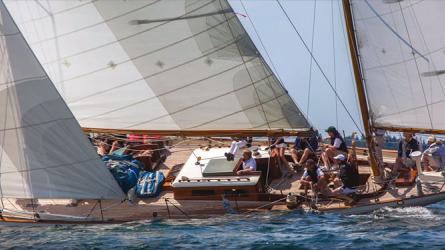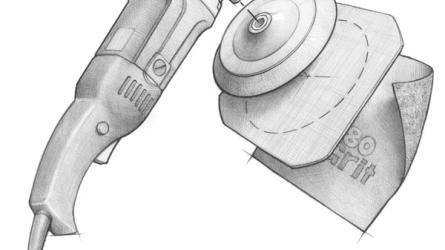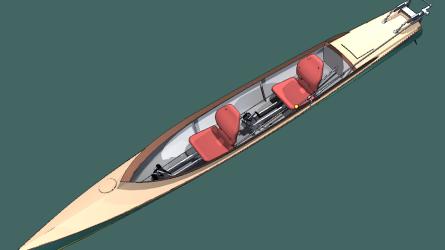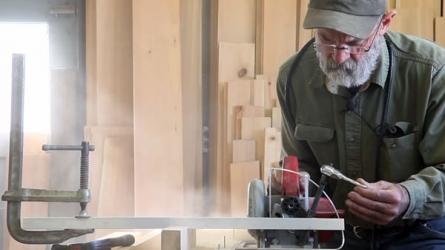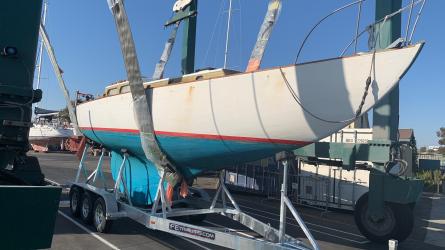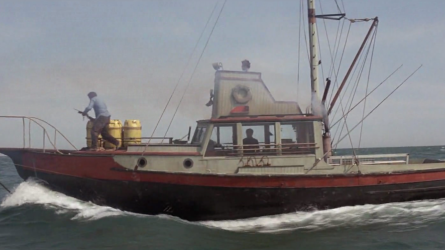May / June 2022
One for the Road
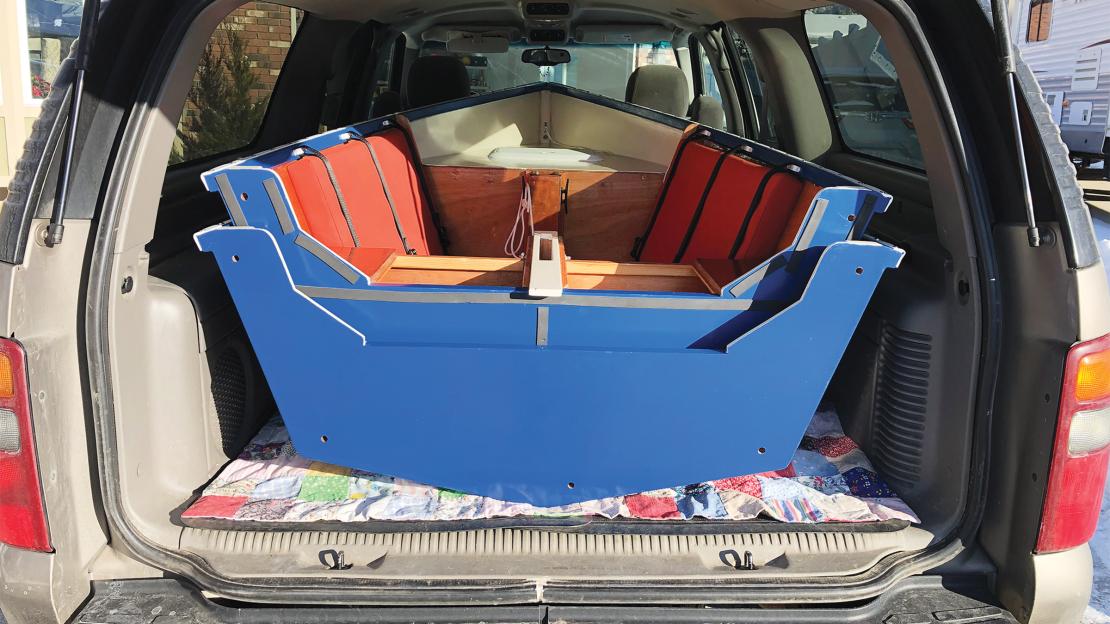
JANE GUZZWELL
The author set out to find an attractive nesting dinghy and settled on a design by Sam Devlin, who helped rework it into a hard-chined hull. The two hull sections of the Linach 15 fit neatly in the back of the author’s Chevrolet Suburban, as they would within most vehicles that can carry a standard 4′ × 8′ sheet of plywood.
To take my grandchildren sailing on Utah’s mountain lakes, I needed the largest dinghy that I could easily transport in a vehicle capable of carrying a standard 4' x 8' sheet of plywood. This became the baseline for determining the maximum size of each half of LINACH, a sailing and rowing dinghy named after the first two letters of each of my first three grandchildren’s given names, by order of birth. This would be a “nesting” boat, meaning it could be disassembled into two more or less equal sections.
I knew that a boat that could be separated into two nesting halves would offer several advantages. I wouldn’t need to buy a large trailer to transport the boat. Parking would be much easier without that trailer, and weeklong road trips to various lakes in other states would be greatly simplified. In addition, the two sections of the dinghy could be conveniently stored indoors by leaning them against the walls of my garage.
At the same time, I wanted a dinghy that would row and sail well, carry at least two adults and two children, and be relatively simple and fast to build—and it would still have to have a hull shape that I would find attractive. None of the existing designs that I found for nesting dinghies met my requirements. They were either too beamy and therefore wouldn’t fit inside my Chevrolet Suburban or they lacked the length and load-carrying capability I needed.
To read the rest of this article:
Click the button below to log into your Digital Issue Access account.
No digital access? Subscribe or upgrade to a WoodenBoat Digital Subscription and finish reading this article as well as every article we have published for the past 50-years.
ACCESS TO EXPERIENCE
Subscribe Today
1 YEAR SUBSCRIPTION (6 ISSUES)
PLUS ACCESS TO MORE THAN 300 DIGITAL BACK ISSUES
DIGITAL $29.00
PRINT+DIGITAL $42.95
Subscribe
To read articles from previous issues, you can purchase the issue at The WoodenBoat Store link below.
 Purchase this issue from
Purchase this issue from




